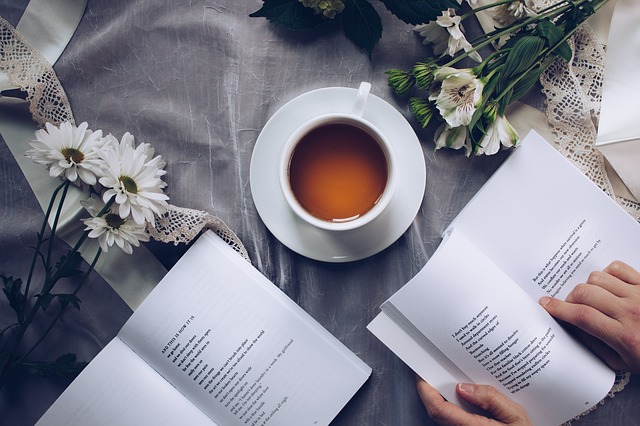Poem analysis can be difficult, no matter your level. They say that a smile goes a long way, and in this case, it’s definitely true. With the following mnemonic, you will naturally cover a lot of bases that examiners are looking for and be able to structure and plan analyses more easily. This trick is also great for comparative poetry or if you are under timed conditions.
S is for structure
Structure is perhaps the most immediately obvious aspect of a poem. You can even get an idea of the structure before you begin reading!
Does the poem literally have some kind of shape? Is it in free verse or set in a traditional meter? What kind of rhyming pattern and punctuation (if any) does it use? Is there any repetition? How long are the lines, and what are the line breaks? Anything you notice about the poem’s structure will also relate to the next point…
M is for meaning
What is the poet ultimately trying to say? Are they highlighting the ambiguity between platonic and romantic love? Mourning the loss of a family member? Portraying betrayal as a natural consequence of jealousy? It’s a good idea to talk about the poem as a construct, using phrases like “[poet name] illustrates…”, or “Through [poem title], [poet name] shows that…” Have a solid hypothesis (and a secondary hypothesis, if you like) on what the meaning of a poem is and then try to show how everything else you mention relates back to this meaning. For example, if the poem is about how old age can be lonely, the structure of the poem (perhaps lines gradually decreasing in length) may reflect this.
I is for imagery
Imagery is anything that has to do with the five senses. How are things described? Actually using the word “imagery” is also an easy way to signpost your thoughts to the examiner. Is the imagery used stark and obvious or more subtle, and why?
L is for language
What literary devices are in the poem? Metaphors, similes, alliteration, personification, strings of certain word-types? Is the poem written in dialect? Why do you think the poet has specifically chosen each particular device, and how do they contribute to the meaning of the poem? Does the poet use words that fit into particular groups? For example, if you see “spicy”, “fragrant”, “tender”, you could argue that they have employed the “lexical field of food”.
E is for effect
How do you, as the reader, feel after reading the poem? Does the language make you feel sympathy for the subject of the poem? Does the reader see something in a new light?
SMILE
SMILE is not an exhaustive method of tackling a poem, but it’s a good place to start jotting down ideas, even if not in that particular order. If you’re comparing two poems, it’s a quick way to see – and then show – how the same devices can be used to different effect, or similar meanings be backed up by different uses of language.
Keep smiling! It will all be okay.
Written by Maia H.




